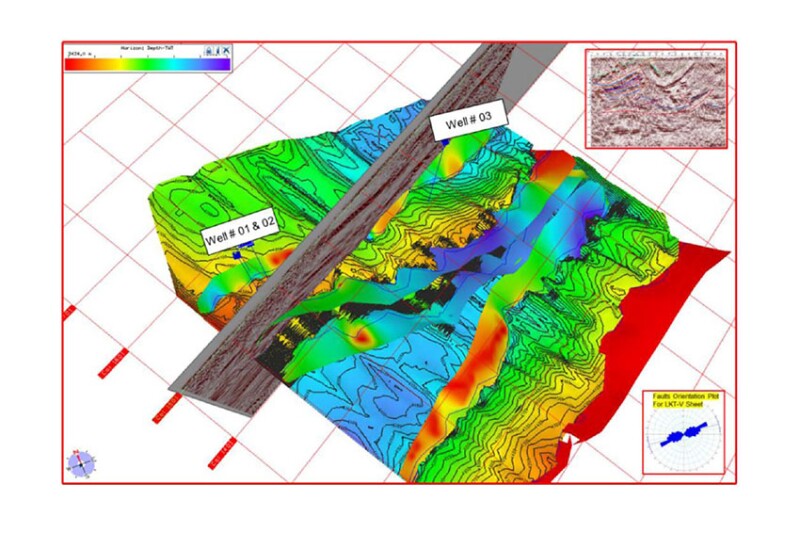The main goal of this research work was to determine the subseismic faults and fracture corridors and their characteristics, including density and orientation, for a Paleocene fractured carbonate reservoir. This work addresses the subseismic faults and fracture-set identification and their effect on the reservoir’s potential regarding maximum hydrocarbon flow and wellbore stability and addresses the reasons behind a well failure in a fracture-dependent reservoir.
Elastic Dislocation (ED) Theory
Application of ED theory means calculating fault-related deformation. This ED theory provides validated seismic interpretation, identifies fracture zones, and calculates stress perturbations around major faults and fractures by incorporation of the mechanical properties of the rock under study.
The total displacement in rock volume surrounded by major faults along with strain and stress can be predicted through ED modeling. These predictions depend on the accurate mapping of fault geometry and slip distribution in 3D seismic-reflection data sets.


